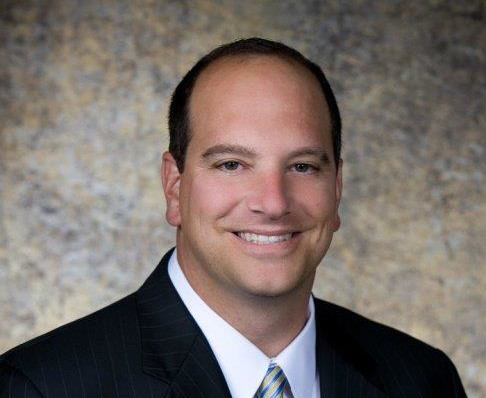Guest Article: Welcome to the Land of OZ

There’s not nearly enough business in Kansas anymore – and at least 46 other states and Puerto Rico. In recent years, venture capitalists have been hyper-focused on highly innovative, high-risk, high reward, rapid-growth investments.
By: Greg Genovese
There’s not nearly enough business in Kansas anymore – and at least 46 other states and Puerto Rico. With 75% of venture capital going to California, New York, and Texas, U.S. business has become more concentrated than ever. In recent years, venture capitalists have been hyper-focused on highly innovative, high-risk, high reward, rapid-growth investments.
Now there’s something for the rest of us – the majority of the investment community. With the creation of the Tax Cuts and Jobs Act of 2017, Qualified Opportunity Funds are now poised to change this disparity. Born out of a perfect storm of sorts; a confluence of the severe negative economic impact of the Great Recession (when there were fewer resources for aspiring entrepreneurs to turn for start-up capital with fewer community banks and also a consolidation of big banks), and a visionary entrepreneur who created the Economic Innovative Group (who conceived the first iterations of the plan), and the championing of the plan by two U.S. senators from both sides of the aisle with a desire to make a positive change. Qualified Opportunity Funds could not only be the investment vehicle many investors with unrealized gains have been waiting for, but also the shot in the arm many communities around the country have been hoping for.
A New Bipartisan Solution
Leaders on both sides of the aisle stepped up to create tax-incentivized Opportunity Zones, and by 2016 the Opportunity Zone initiative won support from both parties with the promise of delivering a market-based, tax-incentive strategy, favored by the right, and a plan to influence funding into areas with the need for incentives to foster greater economic progress favored by the left. It quickly became a political version of pay-dirt for both Republicans and Democrats, but most importantly, a true win for all Americans. This new investment vehicle is poised to unleash what may be the biggest economic development program ever created in the U.S.
Tax Reform for America’s Emerging Markets
Qualified Opportunity Funds can help move trillions of dollars in unrealized capital gains from almost any source including stocks, mutual funds, and real estate, off the sidelines through generous tax incentives and into communities designated as “Opportunity Zones.”
How do the funds work? When people invest in them, they will be able to roll over 100% (or any portion) of their gains from investments and into a Qualified Opportunity Fund. In five years, they’ll be able to reduce the tax on their original capital gains with a 10% step-up in cost basis. In seven years, the tax on the original gains is reduced with a 15% step-up in cost basis. In the tenth year, all capital gains taxes are permanently eliminated on the gains produced from the investment made into a Qualified Opportunity Fund, also known as OZ Funds.
What Investors Should Look for in OZ Funds
Make sure you have a good idea of where you want to place your money. Investors must be accredited and meet the 180-day transaction requirement from the sale date of their gains producing investment which is to be used to invest into an OZ Fund. Choose a firm that can execute the trade in a timely manner in order to ensure you will be able to defer or eliminate your capital gains taxes.
Look for project-oriented programs. You want to be able to see exactly where your money is going and into what investment and evaluate the demographics and the project itself for suitability, as well as evaluate the risk adjusted return potential. It’s important to remember that not all Opportunity Zones are created equal. The demographics of the deal must make sense with a strong upside potential for a valuation and property price that portends well for an eventual exit strategy. A multi-asset class investment will certainly offer more diversification as well.
Considering the OZ Fund’s composition. Is it a well thought out project, first and foremost, without the benefits afforded by the opportunity zone initiative? Regardless of tax advantages, deals must stand on their own. Will it offer distributions for a steady income for those looking for an active cash distribution component? Are the return projections conservative with the best opportunity to deliver your return goals? Does the fund have a realistic exit strategy for the 5-, 7-, and 10-year marks associated with opportunity zone benefits? Does the fund have a favorable tax opinion associated with the offering? And finally, is the offering investor-centric and designed to put the investor first at all times? Undoubtedly, OZ Funds will fall into niche categories and locations to attract more investors as well.
The Ripple Effect of Renewal and Revitalization
Though our first OZ Fund is still in development, we can see what a profound difference it is making in the community, creating a positive social impact, and measurable economic progress. There’s a continued growing sense of optimism derived from seeing more people working and the realization that more businesses, jobs, residents, and visitors will be arriving soon. It’s empowering to be able to connect investors’ capital with our local community.
This new investment vehicle will not be a short-term fix. The likelihood is great that OZ Funds will be around for a long time to engage more private investment and catalyze a wide range of activities on a large scale. I believe OZ Funds will empower us to do well while doing good for our country.
The author, Greg Genovese, is a 30-year veteran of the real estate securities industry and leads Sound West Realty Capital as principal and president.
The views and opinions expressed in the article are those of the author and do not necessarily reflect the views of The DI Wire.